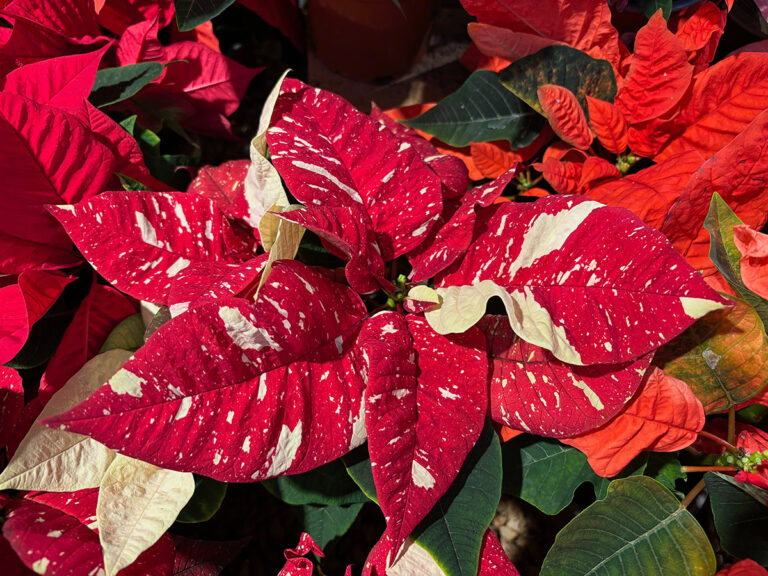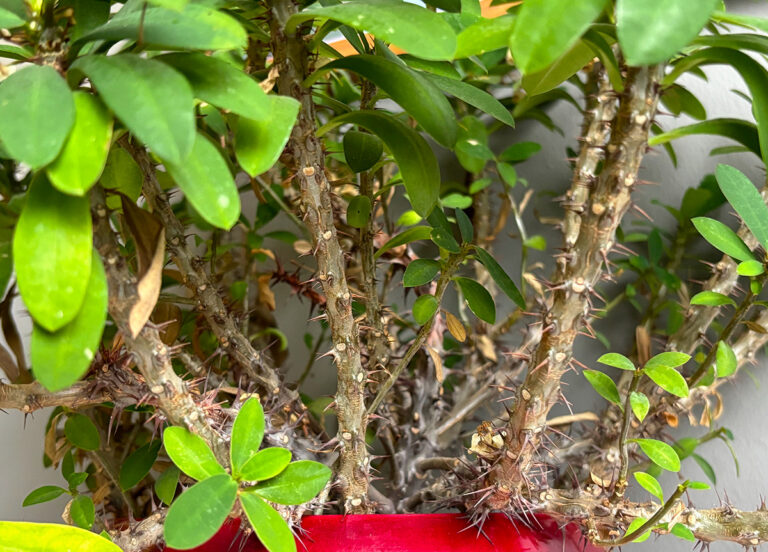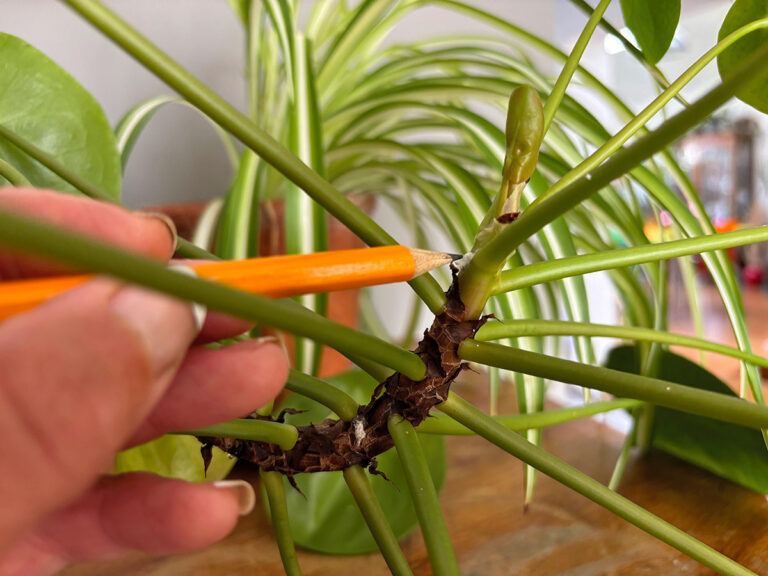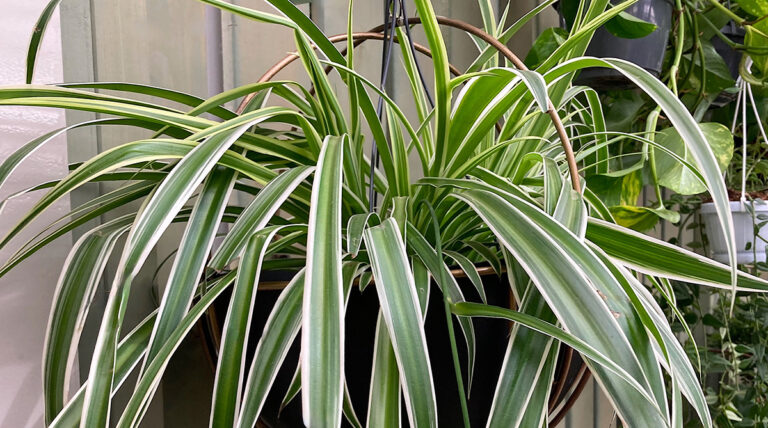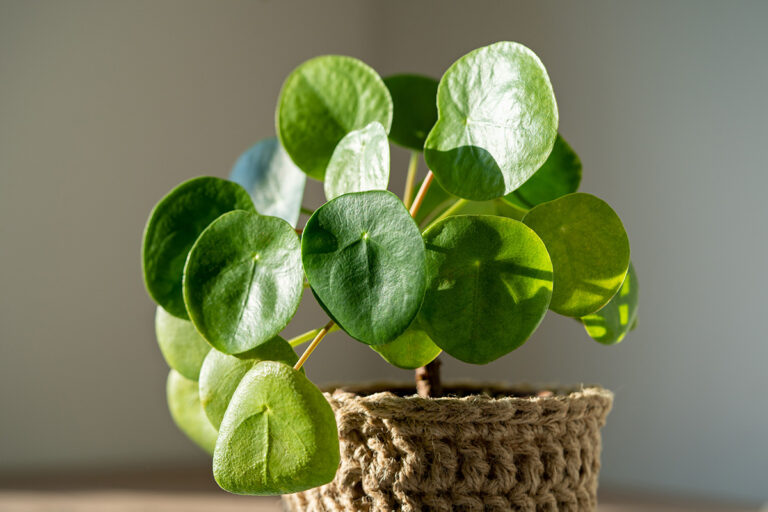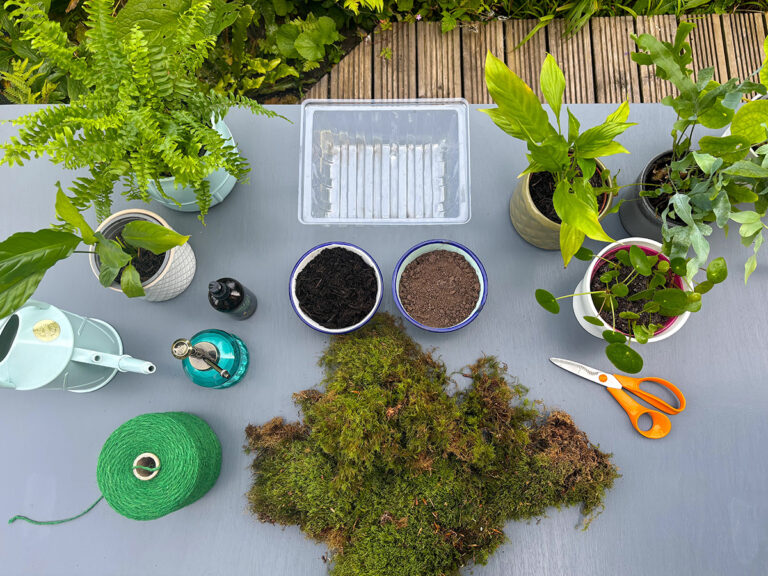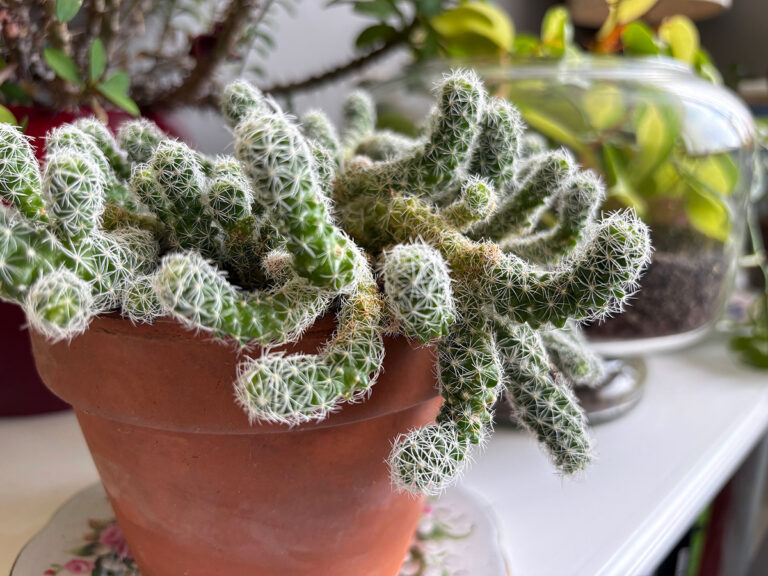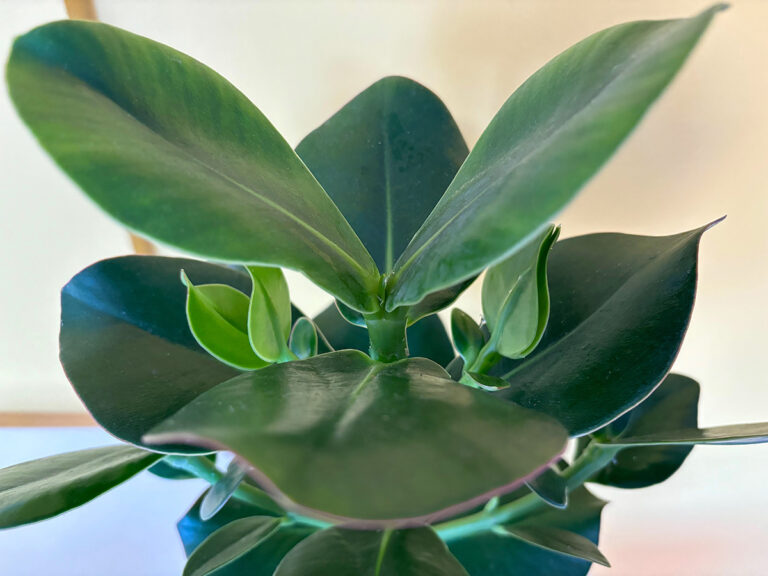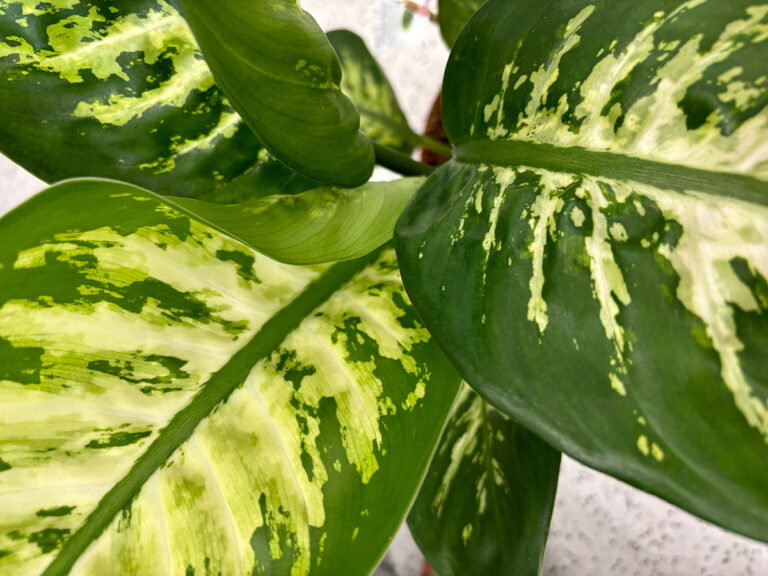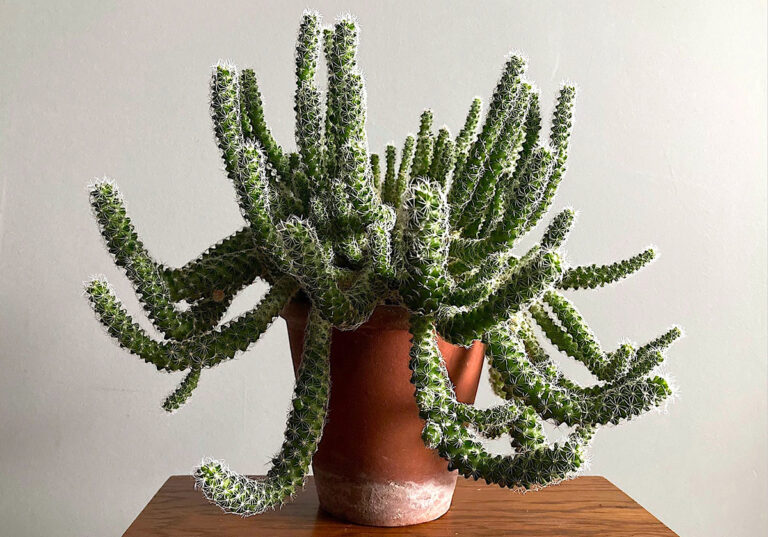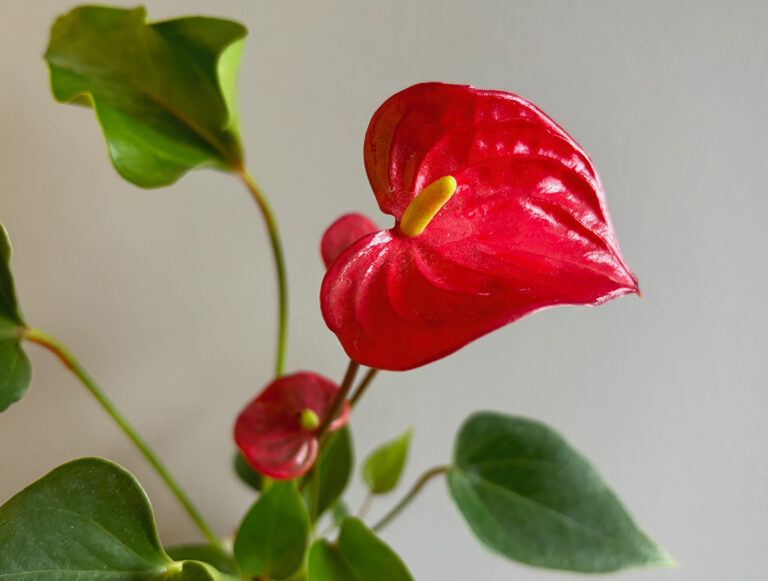We all love to see our houseplants thriving but sometimes environmental factors or pests and diseases can influence our plant’s health and this is illustrated through their leaves.
Identifying leaf problems can be the difference between a plant flourishing or dying. Spotting problems early means we can deal with issues before they overwhelm plants; often simply moving plants to an alternative location within a room can make a big difference.
Here are some common leaf problems which can be easily avoided with a few adjustments to houseplant care.
Distorted or curling leaves
If new shoots are stunted then your plant could be receiving too much light or heat so change its conditions and move to a more favourable spot.
Leaves also curl and turn brown at the edges if under watered so don’t be afraid to adjust watering, light and temperature to get conditions right for individual plants.
Often the first sign of an insect infestation is through a plant’s leaves. Many pests are tiny and difficult to see until they have caused havoc. Common culprits are thrips, aphids, mealybugs, scale, leaf miners and fungus gnats.

Sap suckers like thrips, mealybugs and aphids cause leaves to curl, wilt and eventually drop as bugs literally suck the life out of your plant. Aphids are tiny tear drop shaped insects ranging in colour from yellow to black and multiply quickly. Mealybugs are flat, white and give the appearance of cotton wool covering stems and the underside of leaves; they secrete honeydew which can then lead to mould growth whereas thrips are tiny brown flies which jump between plants and cause mottling.
Treat plants with active pests by spraying the insects directly with Plantsmith Protecting Bug Control Spray every 3 days for 2 weeks and continue to spray once a week after that. To deter pests in future, thoroughly spray the upper and lower surfaces of all the leaves once a week throughout the year. To remove by hand; either wipe with a damp cloth or gently scrape off.
Spotted leaves
If brown spots appear on leaves these could be scorch marks. A plant placed in particularly intense light in the height of summer can have its leaf tissue burnt by the sun. Move your plant out of this position. Although you cannot reverse the burn mark it will stop further damage.
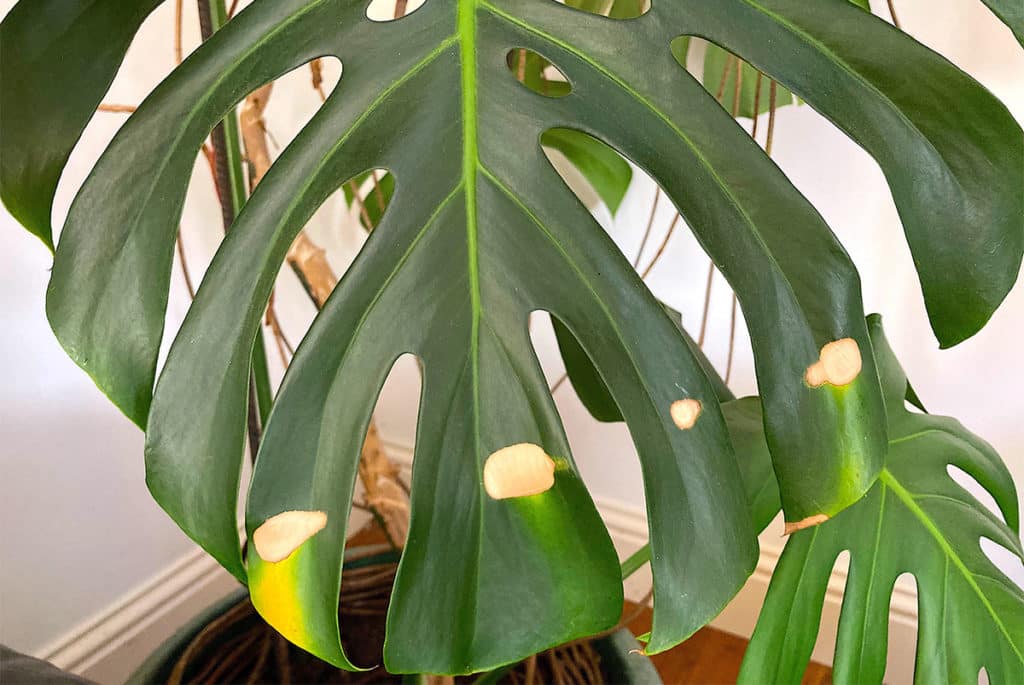
Erratic watering can also cause scorching on leaves. Some plants are not keen to get their leaves wet and droplets of water left on leaves in the sun will cause a scorch mark. Water at the base to avoid leaves.
Spotted marks appearing on leaves could be a fungal infection from potting compost. Remove all affected leaves and potting mix and repot with fresh soil. Keep plant well ventilated and decrease humidity so the plant isn’t festering in damp conditions which are prime for fungi to grow.
If you find small brown blister-type marks on the underside of leaves this could be a fungal disease called Anthracnose, which can affect potted succulents, palms, yuccas and ficus. It occurs after using infected soil, leaving dead plant debris on the soil surface, poor air circulation from over crowding or over watering. Dispose of all infected material and check the plant’s growing conditions. Give it a good feed with Plantsmith Fortifying Houseplant Tonic and make sure the plant is well watered and has sufficient light.
Often stressed plants become vulnerable to pest and diseases so maintaining a good watering and feeding routine will ensure your plant is not deficient. Hygiene is also essential, always disinfect tools between uses to minimalise disease spread between plants.
Yellow leaves
Pale yellow leaves can be attributed to many things, like overpotting. Don’t plant houseplants in oversized pots, it can create a host of problems.
In low light regularly turn potted plants so all leaves rotate access to light and give plants a good feed with Plantsmith’s Fortifying Houseplant Tonic to combat nutrient deficiency; potassium, magnesium and iron promote strong, glossy leaves.
Beware of over watering, this can attract fungus gnats which languish in these damp soil conditions; feeding on roots they weaken growth turning leaves yellow and causing wilting, under watering will produce the same discolouring and then drop. Check the soil before watering to judge whether more or less is required so not to water log roots. Use rainwater where possible as calcium in tap water can also cause yellowing of the leaves.
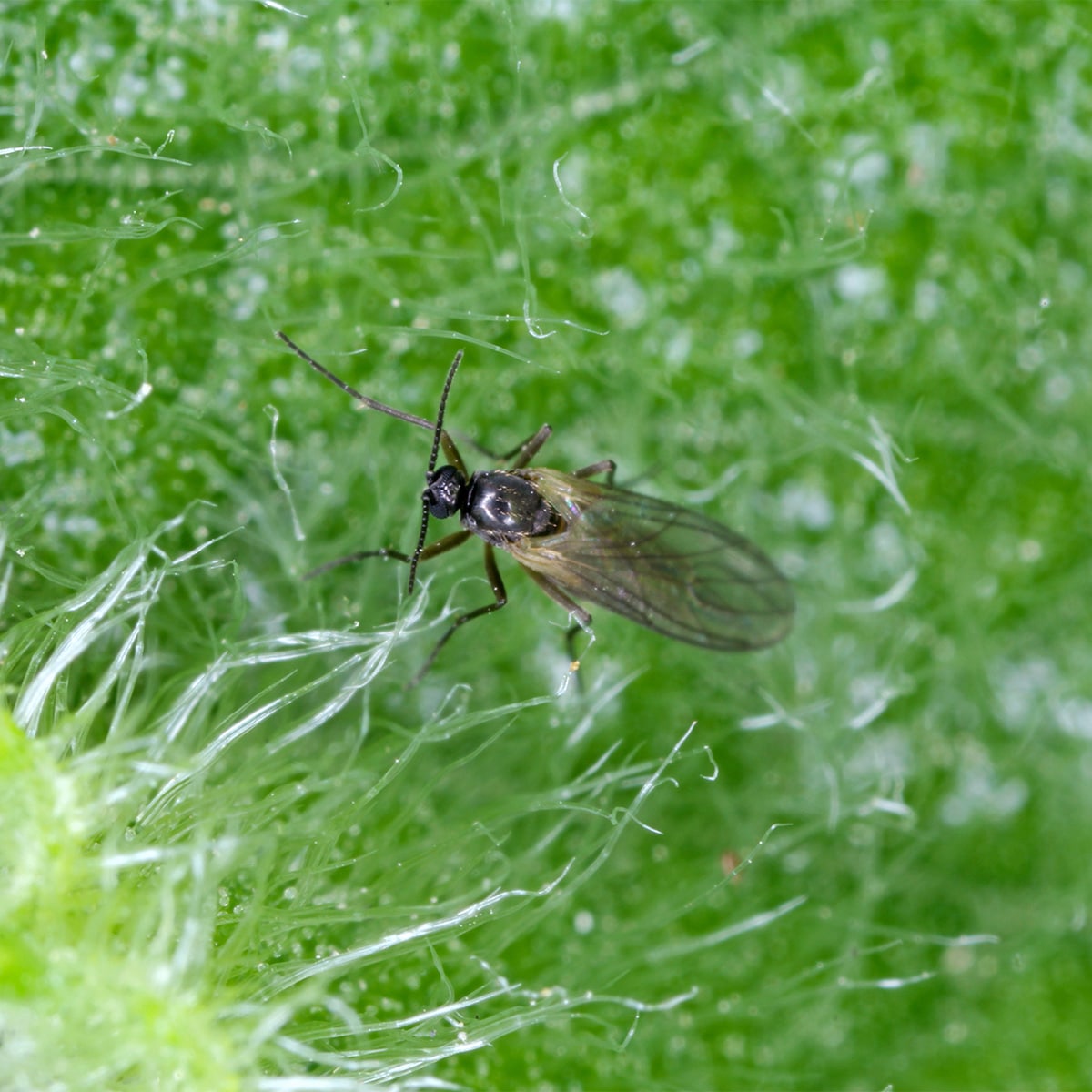

Plants can become discoloured if infested with scale insect. These oval-shaped shelled insects weaken plants and suck sap – a bit like vampires! Treat fungus gnats and scale insect with Protecting Bug Control Spray.
Rest assured not all yellow houseplant leaves signal trouble, lower leaves will naturally yellow and drop as they age.
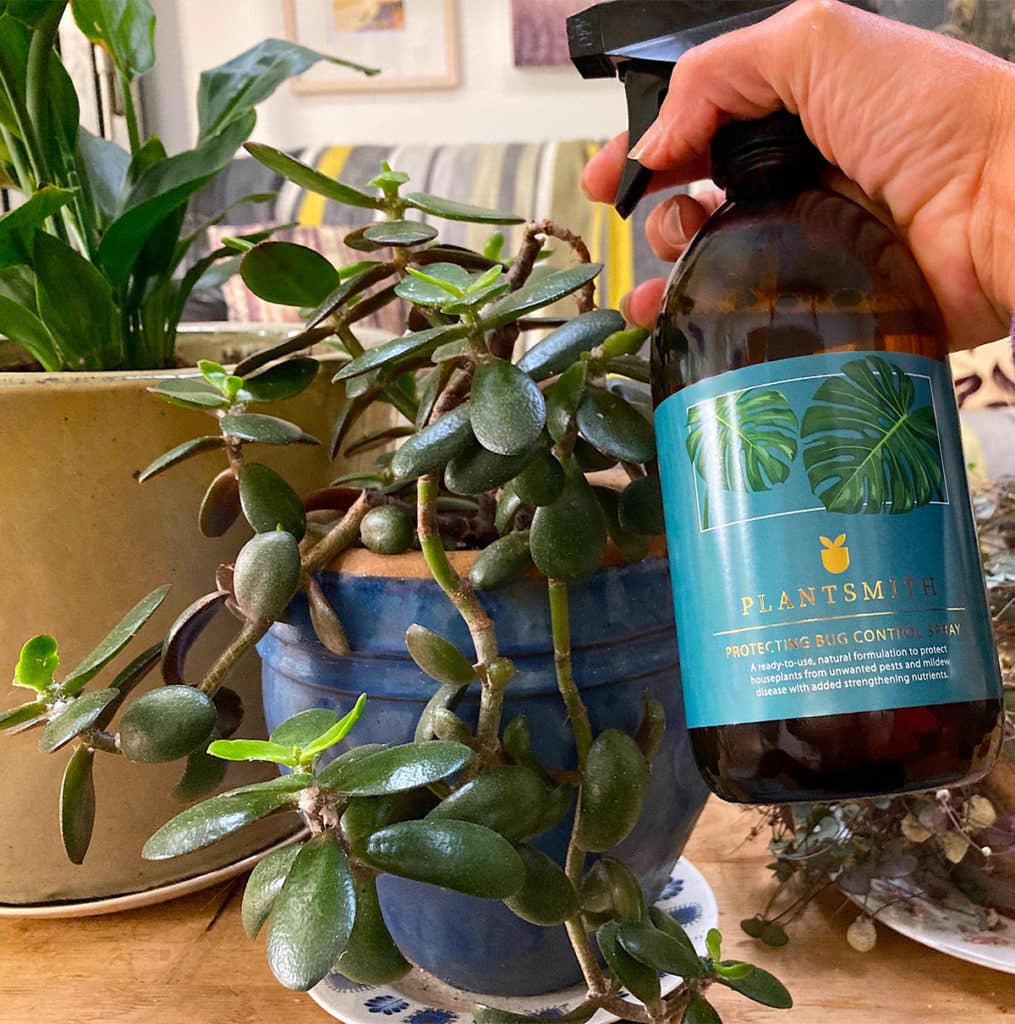
Brown tipped leaves
When plants are not receiving enough water to fully function then they go into survival mode to protect themselves. Increase your watering routine and regularly mist leaves with water or for a tonic to nourish leaves use Plantsmith’s Perfecting Houseplant Care Mist to increase humidity.
Other tricks to help humidify a dry atmosphere is to place your plant on a tray of damp gravel, drained water will keep the environment moist around the pot as it evaporates.
Alternatively brown tips could be a sign of scorching so if your plant is situated in direct sunlight move it.
Pale leaves
Pale leaves could be a sign of too much light. Plants need light to photosynthesise but intense direct light can be damaging, it can breakdown chlorophyll and make the leaf appear bleached. If your plant is showing these symptoms then move it. Find a spot away from bright windows to indirect light.
Interveinal chlorosis
If your plant is not receiving enough nutrients, notably manganese and iron they may show signs of interveinal chlorosis, this is where the plant sucks nutrients out of its own leaves, leaving the leaf tissue pale yellow and the veins dark green.
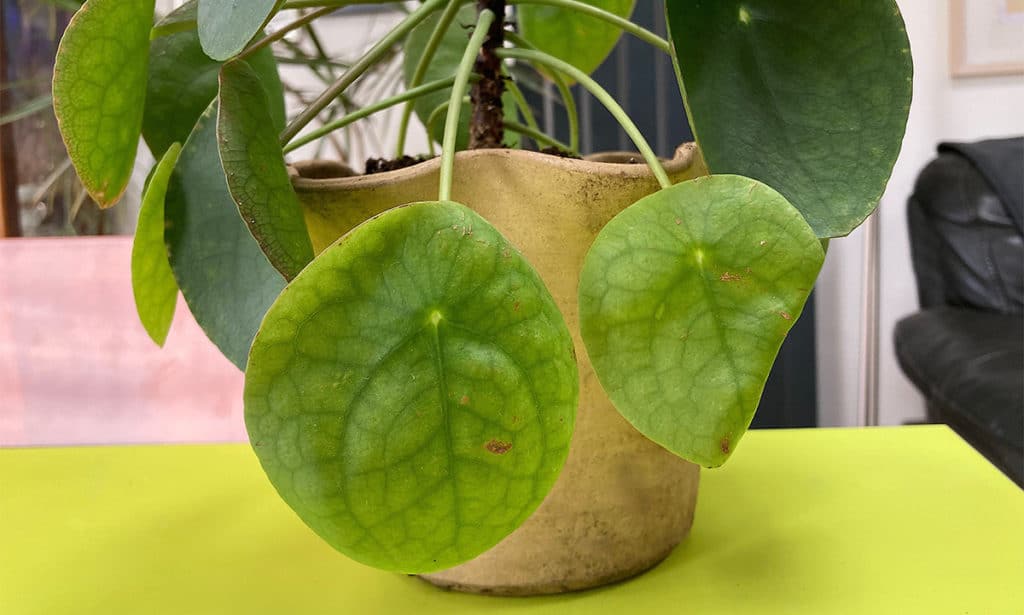
Both manganese and iron are fundamental to making chlorophyll in cells. Chlorophyll gives leaves their green colour and allows plants to photosynthesise by absorbing energy from light so without it leaves turn yellow and the plant will be weak. Feed with Plantsmith’s Fortifying Houseplant Tonic to restore plant leaves to their former glory.
Falling leaves
Falling leaves can be a sign of over watering or draughts. Plants are vulnerable to air changes so look out for cold air from windows, air vents and on the flip side avoid heat. Radiators fluctuate temperature dramatically in winter and dry air out; cookers, fridges and sunlight all can affect leaf health and appearance.
Brown leaves
Brown leaves can be a sign that your plant is in desperate need of a drink! So if your plant seems dry, get the watering can out.
But less dramatically, as leaves age they naturally turn brown, shrivel and drop off. Don’t panic – this is completely normal.






